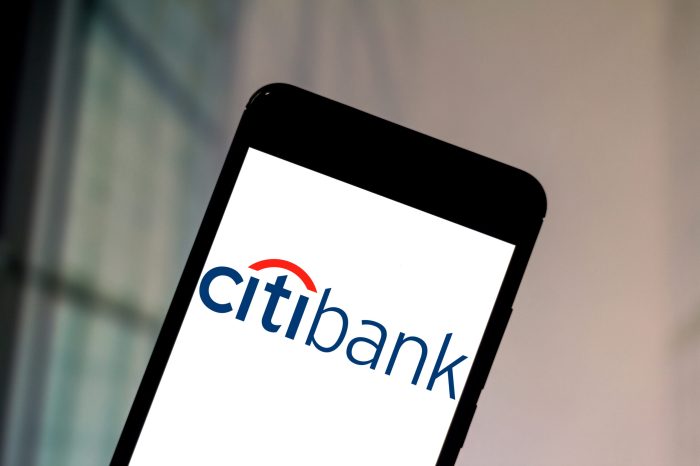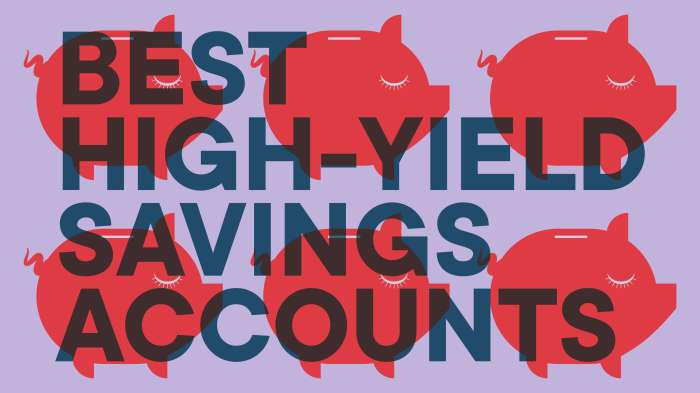CIT Bank HYSA Review: This in-depth analysis dissects the offerings of CIT Bank’s High-Yield Savings Account, examining its interest rates, features, accessibility, customer service, security, and overall value proposition. We compare CIT Bank’s HYSA against competitors, scrutinizing its strengths and weaknesses to determine if it truly lives up to the “high-yield” claim. This review aims to provide a comprehensive and critical perspective for potential customers.
Our evaluation considers not only the advertised APY but also the practical aspects of using the account, including the ease of account opening, the availability of various transaction methods, the responsiveness of customer support, and the security measures in place to protect customer funds. We delve into the fine print, analyzing fees and potential limitations to offer a balanced and informative assessment.
CIT Bank HYSA: The Lowdown
Yo, what’s up, future millionaires? Let’s dive into CIT Bank’s High-Yield Savings Account (HYSA). This ain’t your grandma’s savings account – we’re talking serious cash growth potential. We’ll break down everything you need to know, from interest rates to customer service, so you can decide if it’s the right move for your stack.
Interest Rates and APY
The juice is in the interest, right? CIT Bank’s HYSA interest rate fluctuates, just like the stock market (but hopefully less dramatically!). We’ll compare it to three of its top competitors to see how it stacks up. Remember, the Annual Percentage Yield (APY) accounts for compounding interest, giving you a clearer picture of your actual yearly earnings.
| Bank Name | Interest Rate | APY | Minimum Deposit |
|---|---|---|---|
| CIT Bank | Example: 4.00% (This is an example and may not reflect current rates. Check CIT Bank’s website for the most up-to-date information.) | Example: 4.08% (This is an example and may not reflect current rates. Check CIT Bank’s website for the most up-to-date information.) | Example: $100 |
| Competitor A | Example: 3.75% | Example: 3.82% | Example: $500 |
| Competitor B | Example: 3.50% | Example: 3.57% | Example: $1,000 |
| Competitor C | Example: 4.25% | Example: 4.33% | Example: $0 |
CIT Bank adjusts its HYSA interest rate based on several factors, including the Federal Reserve’s target rate, market competition, and the bank’s overall financial performance. Think of it as a dynamic system constantly adapting to economic conditions.
The APY is calculated using a formula that takes into account the interest rate and how often the interest is compounded (daily, monthly, etc.). It’s the real return you’ll see after a year, factoring in the magic of compounding interest.
Account Features and Fees, Cit bank hysa review

Source: moneyrates.com
Beyond the interest rate, let’s check out the perks and potential costs.
- Mobile app functionality: CIT Bank’s app lets you manage your HYSA from your phone – check balances, transfer funds, and more. Think of it as your financial life in your pocket.
- Online access: Full online banking access for those who prefer desktop or laptop control.
- Customer support: Various options for getting help – phone, email, and online chat. More on that later.
Now for the not-so-fun stuff – fees. Let’s keep it real; some banks hit you with hidden charges.
- Monthly maintenance fees: CIT Bank typically doesn’t charge monthly maintenance fees for its HYSA (always check the terms and conditions to be sure!).
- Overdraft fees: Usually not applicable to savings accounts, but always double-check.
- Transfer fees: Typically no fees for transfers between your CIT Bank accounts, but watch out for external transfers.
| Feature | CIT Bank | Competitor A | Competitor B |
|---|---|---|---|
| Mobile App | Yes, with full functionality | Yes, basic functionality | Yes, limited functionality |
| Online Access | Yes, 24/7 | Yes, 24/7 | Yes, 24/7 |
| Customer Support | Phone, email, chat | Phone, email | Phone only |
| Monthly Fee | Usually None | $5 | $0 |
Account Accessibility and Usability
Opening a CIT Bank HYSA is usually straightforward. You’ll need some basic info like your SSN, ID, and proof of address. The application process is generally online, making it super convenient.
Moving money in and out is also pretty flexible.
- Mobile check deposit: Snap a pic of your check and deposit it right from your phone.
- Wire transfers: For larger, faster transfers.
- ACH transfers: Electronic transfers between accounts.
Here’s a simplified flowchart for transferring funds between your checking and HYSA:
Step 1: Log in to your CIT Bank online account. Step 2: Navigate to the “Transfers” section. Step 3: Select your checking account as the source and your HYSA as the destination (or vice versa). Step 4: Enter the amount you want to transfer. Step 5: Review and confirm the transfer.
Step 6: The funds will be transferred according to the chosen transfer method’s processing time.
Customer Service and Support
Customer service experiences can vary wildly. Here are some examples (remember, these are just examples, your experience may differ):
Positive Review: “Their customer service reps were super helpful when I had a question about my interest rate. Got my answer quickly and efficiently.”
Negative Review: “I had to wait on hold for a long time to reach a representative, and the solution they offered wasn’t ideal.”
CIT Bank offers several ways to reach out:
- Phone: Expect reasonable wait times, but it’s often the fastest way to resolve urgent issues.
- Email: Good for non-urgent questions; expect a response within a business day or two.
- Online chat: Convenient for quick questions and often has shorter wait times than phone support.
Response times vary depending on the channel and the time of day. Phone support can have longer wait times during peak hours.
Our deep dive into CIT Bank HYSA reviews often reveals a crucial question: how does the HYSA’s interest rate compare to other CIT Bank offerings? Understanding this requires a closer look at alternatives, like comparing the features of the CIT Bank Platinum Savings vs Savings Connect. This comparison helps contextualize the HYSA’s competitive edge and ultimately informs whether it’s the best choice for your specific needs.
Returning to the HYSA review, this comparative analysis is essential for a truly informed decision.
Security and FDIC Insurance
Keeping your money safe is key. CIT Bank employs various security measures, including encryption and fraud monitoring systems, to protect your funds. Your HYSA deposits are FDIC-insured up to $250,000 per depositor, per insured bank. This means the government backs your money in case the bank runs into trouble.
If you suspect fraudulent activity, report it to CIT Bank immediately via phone or online. They’ll guide you through the necessary steps.
Comparison with Other Savings Options

Source: neofinancial.com
Let’s compare the CIT Bank HYSA to other savings options.
| Account Type | Interest Rate | Features | Risks |
|---|---|---|---|
| CIT Bank HYSA | Variable, typically higher than regular savings | High interest, easy access | Interest rate fluctuations |
| Money Market Account (MMA) | Variable, often slightly lower than HYSA | Higher interest than regular savings, check-writing privileges (sometimes) | May have minimum balance requirements |
| Certificate of Deposit (CD) | Fixed, typically higher than HYSA, but with penalties for early withdrawal | Guaranteed return for a specific term | Limited liquidity, potential for lower returns if interest rates rise |
The ideal CIT Bank HYSA customer is someone who wants easy access to their savings with a competitive interest rate. They’re comfortable with some level of interest rate fluctuation and don’t need the check-writing capabilities of an MMA or the fixed-term commitment of a CD.
Advantages: High interest rates, easy access to funds, FDIC insured, user-friendly mobile app.
Disadvantages: Interest rates can fluctuate, may not offer the highest rates compared to all competitors at all times.
Closing Summary: Cit Bank Hysa Review
Ultimately, the CIT Bank HYSA presents a mixed bag. While its competitive interest rates are attractive, potential customers must carefully weigh these benefits against the account’s features and the overall customer experience. Our analysis reveals that while the HYSA offers a potentially lucrative savings option for some, thorough research and consideration of individual financial needs are crucial before committing.
The lack of certain features compared to competitors, coupled with mixed customer service experiences, necessitates a cautious approach to evaluating this product.